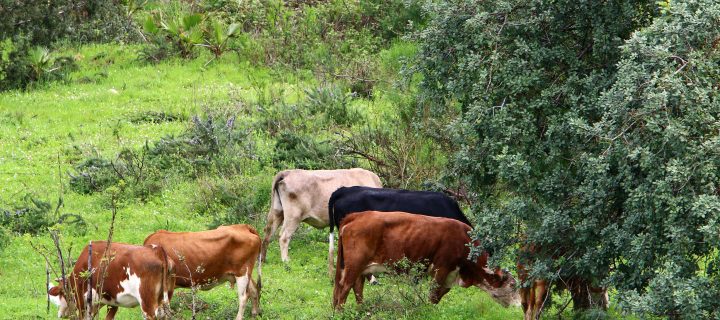The interfaces between humans and animal environments are proving to be dangerous places.
The novel coronavirus didn’t come from a dark void. While it is hard to imagine the life of these tiny, microscopic beings and the world they inhabit in their hosts, many scientists now agree it is likely the novel coronavirus came to us from bats. The World Health Organization (WHO) has stated the illness comes from a group of viruses that originate in this ancient mammal. Exactly how the virus jumped to humans remains a bit of a mystery, but some think it could have infected pangolins at the Wuhan wet market, before making its way into us.
In a way, the pandemic is not something that happened entirely by chance. It is important to note the virus that causes COVID-19, Sars-CoV-2, and other coronaviruses that have caused large outbreaks around the world are most likely sending us a message. These viruses are like canaries in a gold mine. They are warning us that human activity is stepping too far into the realm of Earth’s natural, wild environment.
Related: Vitamin D and COVID-19: Getting Enough Matters
How so? A report on BBC.com states, “We have created “a perfect storm” for diseases from wildlife to spill over into humans and spread quickly around the world”.
Scientists say places where animals and humans share boundaries, such as farms, the edges of forests, and other manmade and natural environments, can present the perfect opportunity for disease to spread. The more we encroach on the planet’s natural landscapes, the greater our chances of “releasing” new viruses, bacteria, and parasites to humans.
People in places all over the world are contributing to the spillover of these diseases from animals to humans. For example, the Nipah virus had its first outbreak in Malaysia in 1999. This viral infection also came from bats. BBC.com reports how it happened. There was a large pig farm situated at the edge of a forest, and fruit trees nearby. Bats from the forest munched in the fruit, which in turn, fell to the ground. The pigs ate the fallen fruit and one contracted the Nipah virus from an infected bat that had left half-eaten fruit on the tree, which then fell.
The very scary thing about Nipah virus is that it kills between 40-75% of those it infects. (The novel coronavirus is thought to have a fatality rate of about 1%). Over 100 people who worked with these pigs died from the Nipah virus, and 250 fell ill.
Related: What to Look For When Buying Reusable Face Masks
If we keep developing natural landscapes for our own use, more pandemics will come, scientists say. In the past 20 years, we have experienced six different viral outbreaks. These include MERS, SARS, Ebola, the swine flu, avian influenza, and now COVID-19, and in a way, this is just the beginning.
Scientists are trying to stay in step with what is happening, but the future will tell if we can avoid another health disaster or not. There are experts who study where new diseases come from and how they emerge on Earth. These include scientists from the University of Liverpool in the UK, who are working to develop a system of pattern-recognition. This system can help predict which zoonotic diseases-those coming from animals- are the riskiest for humans.
As time goes by, scientists are trying to examine and analyze all known wildlife diseases, in order to identify those that need our immediate attention. In doing so, it is hoped that medical treatments will be developed before an outbreak occurs. In the case of the novel coronavirus, no one was keeping track of its existence or danger to us. Consequently, scientists are now playing catch-up as we wait. But this work takes time, and money to complete. Having governments on side to help fund this work, and make it a priority worldwide is important.
As professor Eric Fevre from the University of Liverpool and the International Livestock Research Institute in Nairobi, Kenya, commented to BBC.com, “This kind of event is likely to happen again and again. It’s been happening all throughout our interaction with the natural world. What’s important now is how we understand it and respond to it.”
photo credits: Shimon Bar/Shutterstock.com












